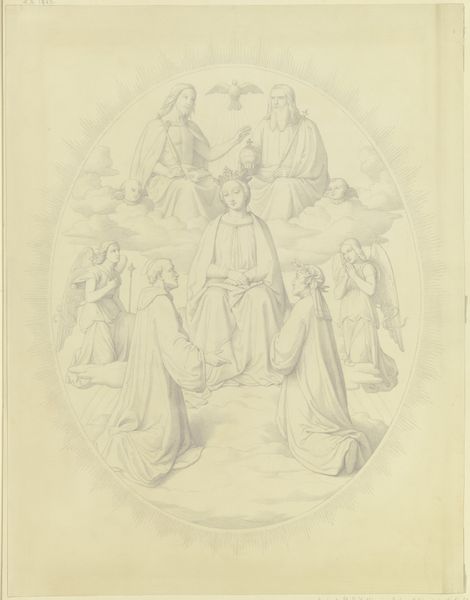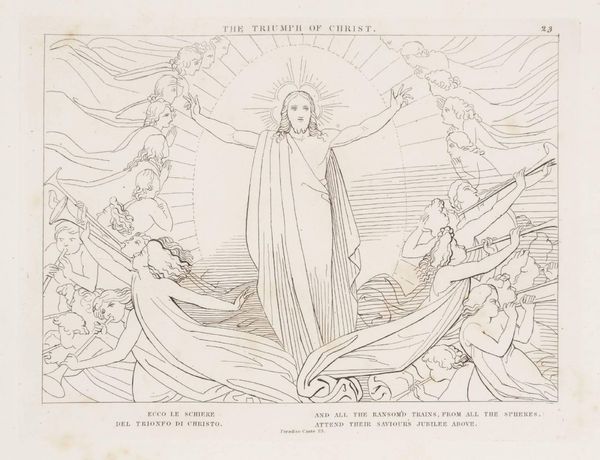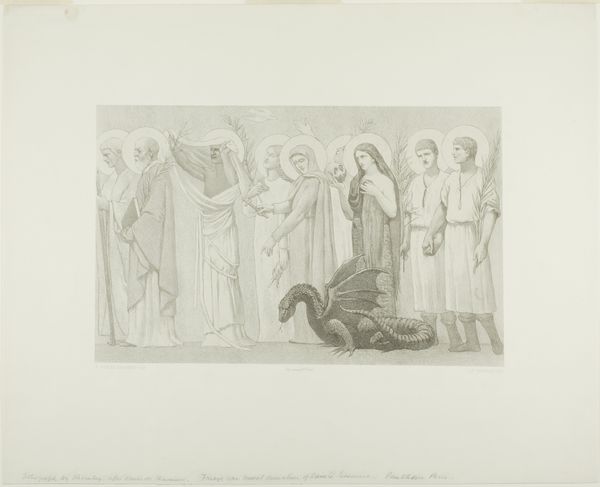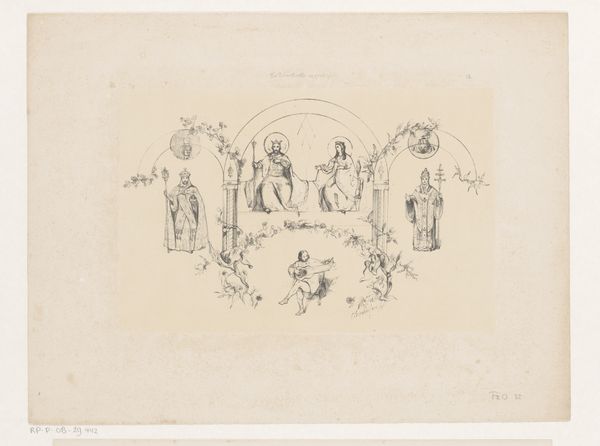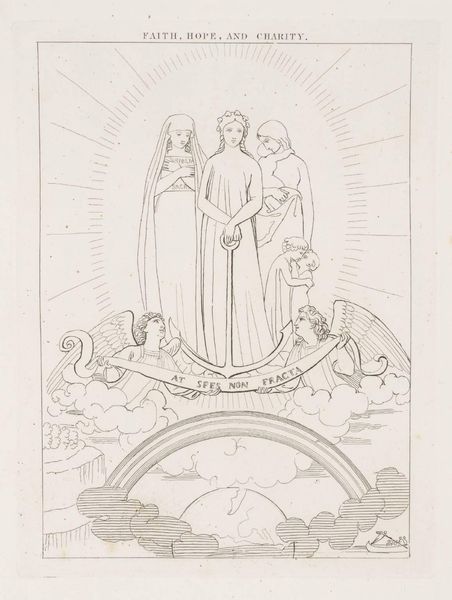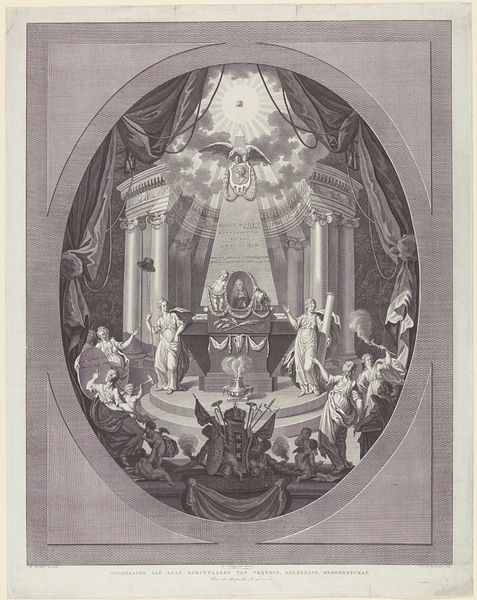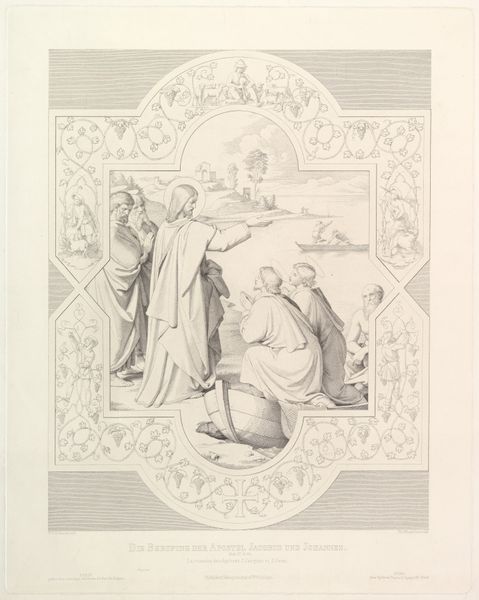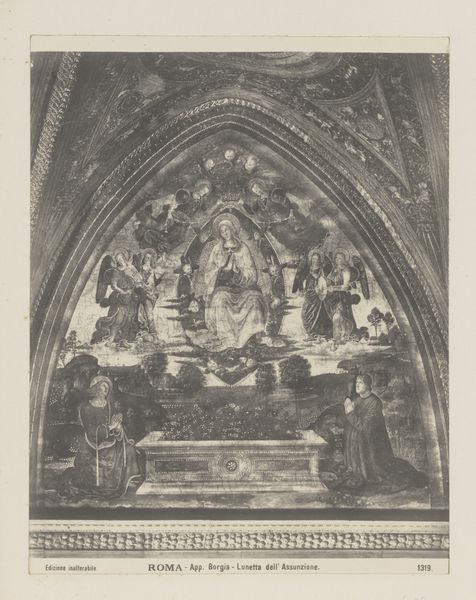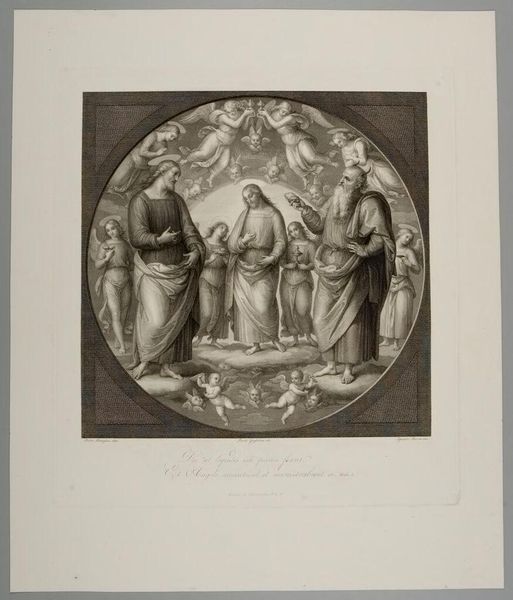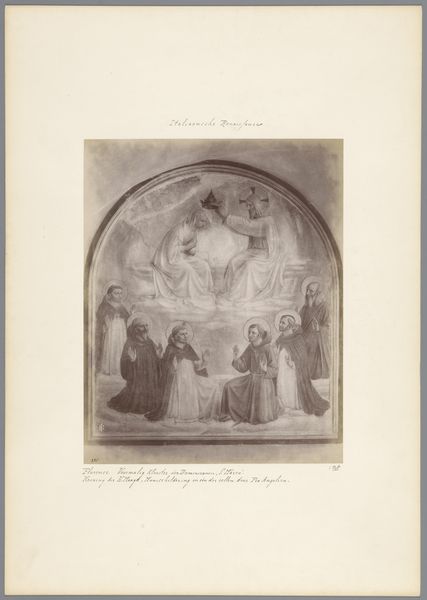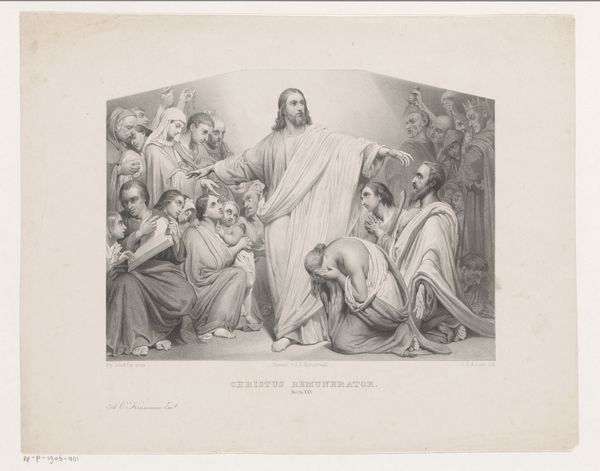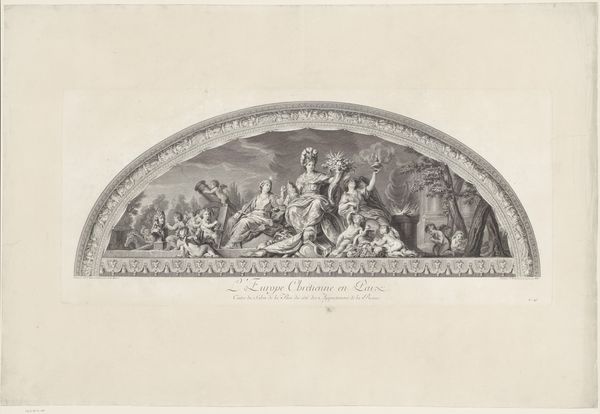
print, etching, engraving
#
byzantine-art
#
medieval
# print
#
etching
#
engraving
Dimensions: 130 mm (height) x 200 mm (width) (Plademål)
Editor: This is *Maleri i korrundingen i Skibby Kirke*, an etching and engraving by Julius Magnus-Petersen, sometime between 1834 and 1866. It feels like it's trying to capture a much older, medieval aesthetic. The figure in the middle—is it Christ?— seems both powerful and strangely flat. What do you see in this piece? Curator: What I see is an appropriation, and thus, a re-contextualization. Magnus-Petersen is engaging with Byzantine and medieval artistic traditions but filtered through a 19th-century lens. It’s vital to understand why a 19th-century artist would choose to emulate these earlier styles. This was a period of intense national romanticism, wasn’t it? How might a return to a "pure," arguably religious, artistic vocabulary serve the construction of a specific cultural or national identity? Editor: That’s interesting. I hadn’t thought about it as a conscious choice related to nationalism. The original murals must have been seen as inherently Danish in some way? Curator: Exactly! And not just Danish but inherently *Christian*, tapping into a long and powerful history of religious and political authority. Look at the deliberate archaism of the figures, the halos, and the stylized composition, and ask yourself what socio-political functions were enabled by this “return”. How do you feel this etching functions compared to the murals themselves? Editor: The print makes it reproducible and accessible to a wider audience. Almost like propaganda? Curator: Precisely. Art isn't created in a vacuum. We need to ask, what stories is this artwork telling about power, religion, and national identity in 19th-century Denmark, and what earlier narratives is it subtly reshaping, or even silencing? Editor: I guess I saw a religious image, but it's also about a specific moment in Denmark's history, trying to build an idea about the country. Curator: Yes, art is always connected to the culture that makes it. Hopefully you now view this artwork as more than simply a religious scene in an old style, but as a key cultural and political text as well.
Comments
No comments
Be the first to comment and join the conversation on the ultimate creative platform.
